Review: Microsoft Lumia 640 XL for AT&T
Jul 30, 2015, 4:30 PM by Eric M. Zeman
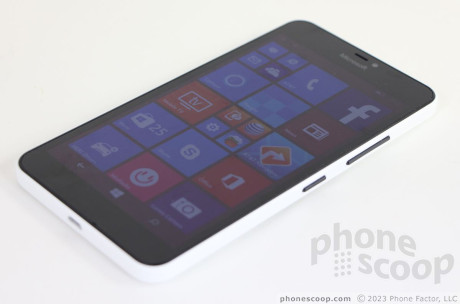
Microsoft's latest Windows handset for AT&T is the powerful 640 XL, a massive device best suited to phablet lovers. It features a 5.7-inch screen, 13-megapixel camera, quad-core processor, and an assortment of AT&T and Microsoft apps and services. Here is Phone Scoop's full review.
Hardware
Is It Your Type?
The Lumia 640 XL is an inexpensive phablet that runs Windows Phone. If you're a fan of Microsoft's mobile operating system, need a phone on AT&T's network, and want a big screen, the Lumia 640 XL is your ticket to happiness.
Body
The Microsoft Lumia 640 XL, with its 5.7-inch display, is a massive platter of a phone. It borders on too big. There are practical limits to what we can carry around and use all day every day, and the Lumia 640 XL is right there on the edge. It's close in size to the Motorola Nexus 6 and the Apple iPhone 6 Plus. This is a two-handed device and you need to know that going in.
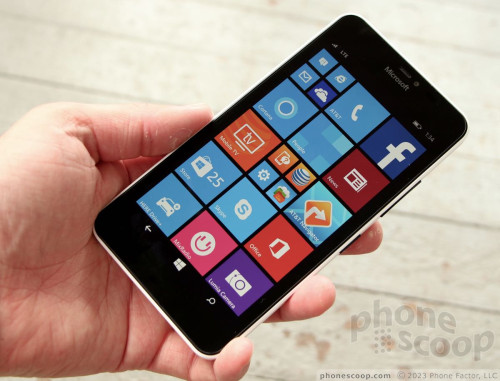
Microsoft's handsets share certain design elements no matter the size. The 640 XL — a big brother to the Lumia 640 — relies on simple lines and clean surfaces. It is blocky, but incorporates just the right number of angles and curves to define the shape. Unlike many Lumias, the 640 XL only comes in black or white; you'll find no splashy colors among the options for this phone. The white is offset with black accents. At least the black/white surfaces have a matte finish and aren't glossy.
The 640 XL is a mix of glass and thick polycarbonate. The polycarbonate shell forms the rear and side surfaces of the phone; it wraps all the way around the handset. The side edges are flat enough that the phone will stand on end.
Phones often become unwieldy when they measure more than three inches from side to side. The 640 XL is 3.21 inches wide. I can't wrap my hands all the way around it. Thank goodness Microsoft kept the depth to just 0.35 inches (9mm). The hard, sharp angle where the sides meet the back doesn't help improve usability. Most people will need to use two hands to operate this phone. I'm happy to report that it isn't overly heavy. It just barely fits into pockets. My jeans can accommodate the 640 XL, but the blocky shape makes it painfully obvious that you have a dinner tray stuffed in your pants. Also, getting into and out of a car with a phone this size in your pocket can be painful.
Whether you pick the black or white Lumia 640 XL, the entire glass front surface is black. The slit cut into the glass for the earpiece is among the smallest I've ever seen, and it's also the only thing interrupting the uniformity of the glass. The 640 XL doesn't have physical buttons on the front.
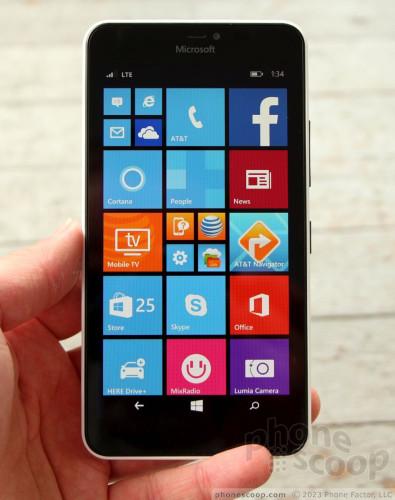
The only two hardware keys are positioned on the right edge of the phone. The screen lock button is located about midway along the edge and the volume toggle is above it. Both buttons have glossy black surfaces and excellent profiles. I am very pleased with the travel and feedback, which is springy. The headphone jack is on the top edge and the USB port, on the bottom.
It takes a bit of work to pry off the rear polycarbonate shell. The 640 XL has a large, removeable battery. Sadly, neither the SIM card nor the memory card can be swapped unless you first take out the battery.
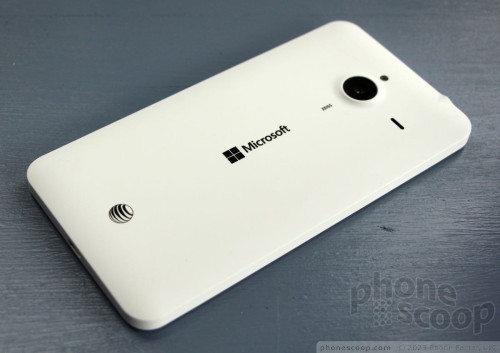
I came away from the Lumia 640 XL with positive feelings about the hardware. It's pleasing enough to look at, the quality of the materials is excellent, and the features are more or less in line with the competition. But it is big, and big has to be your bag.
AT&T's selection of new Windows Phone hardware is extremely limited at the moment. The only options are the huge 640 XL, the middle-of-the-road 640 (prepaid only), and last year's 635, which is much smaller.
Screen
The 640 XL's display stretches across 5.7 inches of Gorilla Glass 3. The screen has 1280 by 720 resolution. Normally, I'd say this isn't quite good enough for a display of this size, but Windows Phone software — which uses a lot of straight edges in its design — helps the screen look better than it might otherwise. The square and rectangular Live Tiles on the home screen, for example, look great. I only noticed the resolution when browsing the web, where it is easy to encounter small fonts. Sometimes such text looked a bit hazy. Otherwise, the screen is bright, offers excellent contrast, and is easy to see and use outdoors. I liked watching videos on the 5.7-inch panel.
Signal
The 640 XL performed well on AT&T's network in the greater New York City area and on par with other AT&T handsets. The phone stuck to AT&T's 4G LTE network like glue. It only dropped down to 3G (HSPA) when it encountered the worst network conditions. The 640 XL was always able to make and connect calls. The phone didn't drop any calls, nor did it miss any due to signal issues. I was pleased with data speeds and rarely encountered any problems. The 640 XL was quick to load web pages and didn't have any trouble keeping my Instagram feed up to date. In other words, it worked exactly as it should.
Sound
The Lumia 640 XL treads the middle of the road as far as call quality is concerned, and delicately balances the mix between clarity and volume. I kept the volume set to the maximum throughout my time with the 640, as I found it was necessary in order to hear all calls. I was able to hear calls easily in sleepy coffee shops and quiet restaurants, but conversations were often drowned out when ambling down busy Manhattan sidewalks. I was happy with the clarity of calls, and the earpiece never experienced any sort of distortion. Those I spoke to through the 640 XL said I sounded good.
The speakerphone also manages to deliver average performance. Volume is quite good, but clarity is somewhat muddier than calls taken through the earpiece. It works well enough in a car, but could be better.
Ringers and alert tones offer enough of a jolt to grab your attention. The vibrate alert is especially strong.
The 640 XL doesn't profess to have any special audio powers, but I was happy enough to listen to Joe Satriani's latest riffs through my favorite pair of wired earbuds. The quality of music playback was enjoyable.
Battery
One of the benefits afforded by phablets is ample space for large batteries. The 640 XL packs a 3,000 mAh battery and delivers excellent battery life. The phone easily powered through about a day and a half on a single charge. On days when I put the 640 XL into overdrive, it still managed to make it to the end of the day without fail. I have zero complaints about the battery; it's quite good.
The phone includes Microsoft's usual battery saver tool. You can set the battery saver to engage when the battery reaches 20% or turn it on manually. Once on, the battery saver turns off most background processes and severely limits push notifications to conserve power.
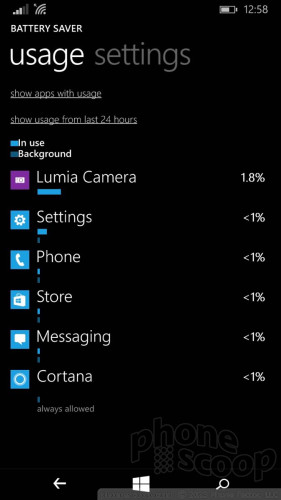
Bluetooth, GPS, NFC, WiFi
I paired a range of Bluetooth devices with the 640 XL. Phone calls sent to a mono headset or my car's hands-free system sounded pretty good. Without support for the high-quality aptX profile, music was only OK when sent to a Bluetooth speaker. The 640 XL also worked properly with a FitBit wearable.
The 640 XL, which uses Nokia's HERE Maps, was quick to locate me and pinpointed me to within about 10 feet.
The NFC radio functioned properly. It helped ease the pairing process when it came time for me to test the audio quality through a Bluetooth speaker. A tap was all it took.
The 640 XL's WiFi radio performed as expected with my home WiFi network and several public networks.
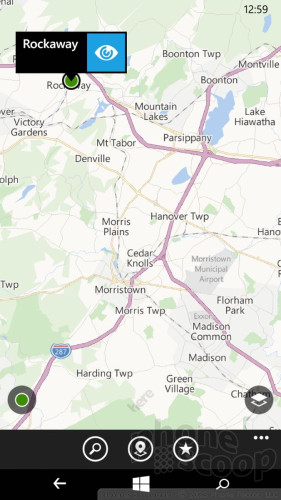
Software
Lock Screen
Microsoft has its own idea about what constitutes a useful lock screen. Perhaps my favorite feature of Lumias is Glance, which puts the clock on the darkened display when the phone is asleep. This way you're always able to check the time at a... glance. The clock is enormous and easy to read.
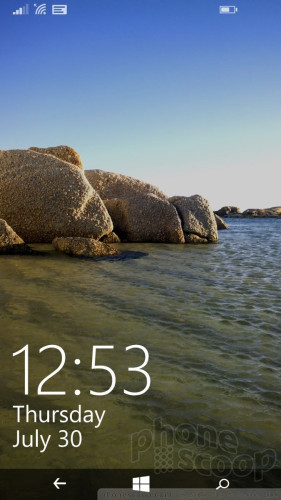
The full (awake) lock screen is flexible and can show as much or as little detail as you want. The clock and date are displayed prominently along the bottom of the screen. You can choose from a wide selection of lock screen wallpapers, such as the Bing image of the day, or a photo feed from your favorite Facebook contacts.
As far as notifications are concerned, Windows Phone allows you to display unread notification counts from a handful of apps — such as the phone, text messaging, email, Facebook, the calendar, and Twitter — on the lock screen. These are all lined up in small circles at the bottom of the screen. Only one of these apps can be prioritized, meaning the notifications from that one app provide some actual detail rather than just the number of messages/alerts. The notification shade — which includes access to select controls — is accessible from the lock screen.
These lock screen features are available even when the phone is protected by a password, but you'll have to enter the password to interact directly with any of the notifications (i.e., read your email, or see your call history.)
Menus
The Lumia 640 XL runs Windows Phone 8.1 with the Lumia Denim update. Microsoft has said the 640 XL can be upgraded to Windows 10 Mobile later this year.
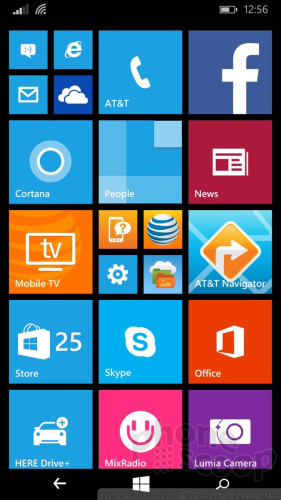
Windows Phone uses one infinitely tall home screen for Live Tiles, which act like app icons and widgets at the same time. The Tiles come in small, medium, and large sizes and you can arrange them in any configuration you choose. Many of the Tiles are transparent, which lets you see the wallpaper behind them. You can also store folders — with collections of apps inside — on the home screen. You can add as much to the home screen as you want.
The second main screen in Windows Phone is the full list of installed apps. They are always arranged in an alphabetical list. The Settings tool — which I advise you pin to the home screen — has recently been revamped and is much more user-friendly.
Microsoft opted for the workhorse 1.2 GHz quad-core Snapdragon 400 processor, which is paired with 1GB of RAM. The combination performed admirably, and the Lumia 640 XL felt fast while I tested it. I do, however, have to wonder why Microsoft didn't select the newer Snapdragon 410.
Camera
The 640 XL offers only the Lumia Camera app, which replaces the Windows Phone camera app and older Nokia camera app. The phone doesn't have a dedicated camera button, but Microsoft provided access to the camera in the notification center. It would be better if Microsoft offered a lock screen shortcut to the camera, but it does not.
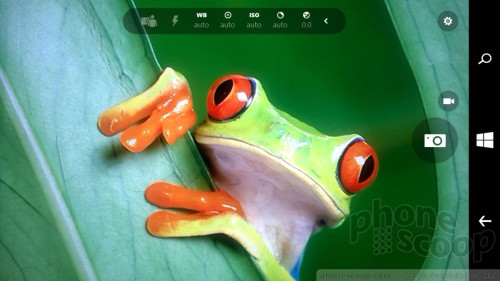
The camera user interface is easy to digest thanks to its plain arrangement. A small strip of options lets you switch to the front camera, turn on the flash, or turn on Rich Capture Mode. You can customize what happens with a long-press of the shutter button to either fire off a burst of photos or capture video. I'm not sure why this option exists considering there's a separate video camera button.
The strip also has a little arrow. Press it, and you gain access to full manual controls. You can manage white balance, exposure, ISO, brightness, and focus all on your own. For knowledgeable users, these tools can lead to much more creative results.
As with all Windows Phone cameras, the 640 XL includes several Lenses, which are software add-ons for the camera. One of those pre-installed is Lumia Selfie. If you want to snag the best-possible self portrait, this mode gives you the tools to get it done right. It includes a timer and some quick editing tools, such as cropping and mirroring, so you can make adjustments before sharing to social networks.
Microsoft tossed in the Creative Studio app for editing, the Moments app for creating short photo/video collages, and the Storyteller app for assembling larger albums.
Photos/Video
The Lumia 640 XL has a 13-megapixel sensor. You'll need to adjust the camera to shoot in the 4:3 aspect ratio to get the full pixel count. (The default 16:9 setting crops your photos down to 10 megapixels.)
This phone had a really good camera. The images offer excellent focus, exposure, and white balance. I was pleased with the bulk of the pictures I took. The 640 XL easily outshoots other phones with similar price points.
The 5-megapixel selfie camera performs quite well. I saw a small amount of grain from time to time, but the images were good with respect to focus and exposure.
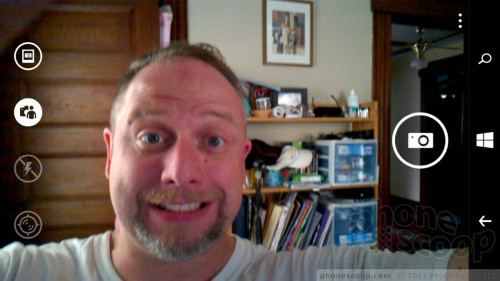
The 1080p HD video I captured with the 640 XL was average for a device in this class. Focus, exposure, and white balance were mostly accurate and the results were usable.
The 640 XL can certainly handle daily photo and video needs, and can replace a standalone camera for many situations.
AT&T Stuff
AT&T dropped a handful of useless junk into the 640 XL's app library, including Address Book, Family Map, Locker, Mark the Spot, Navigator, Keeper, Mobile TV, myAT&T, and the Yellow Pages. The 640 XL has only 8 GB of internal storage, merely 3.7 GB of which is available to owners. That's a pittance. You need a memory card with this phone, even though Windows Phone lets you delete unwanted apps.
Microsoft Stuff
Free access to Microsoft apps and services are one of the chief benefits of owning a Windows Phone. The 640 XL includes Microsoft Office (Word, Excel, PowerPoint), OneNote, OneDrive, and Cortana (virtual assistant). The first few are great productivity tools, while Cortana can be genuinely helpful when it comes to managing your daily activities.
There are a few other handy apps, such as Data Sense, Storage Sense, and WiFi Sense, which help manage your cellular data usage, on-board storage, and WiFi access, respectively.
Wrap-Up
The Lumia 640 XL is, by and large, a great phone. It's attractive, well-made, and performs well for a $250 handset. I wish the screen had more pixels and I wish call quality was a bit better, but these aren't deal-breakers. Windows Phone runs perfectly on the 640 XL, and Microsoft's core apps are quite good if you need to pair the 640 XL with your work environment. The camera does a great job, (as is often the case on Lumia handsets.)
If you're in the market for a Windows phablet, the Lumia 640 XL is "extra likeable" and I recommend it. If you want something a bit more compact, the 640, available from Cricket or GoPhone, might be a better option.
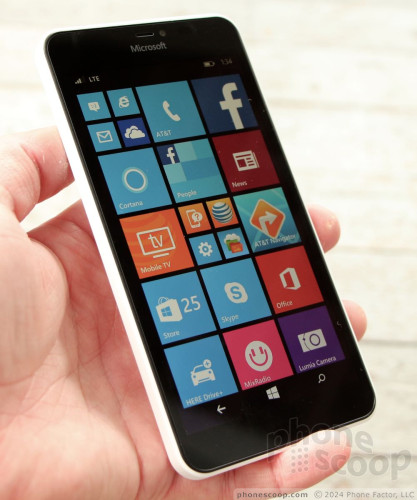
Comments
No messages














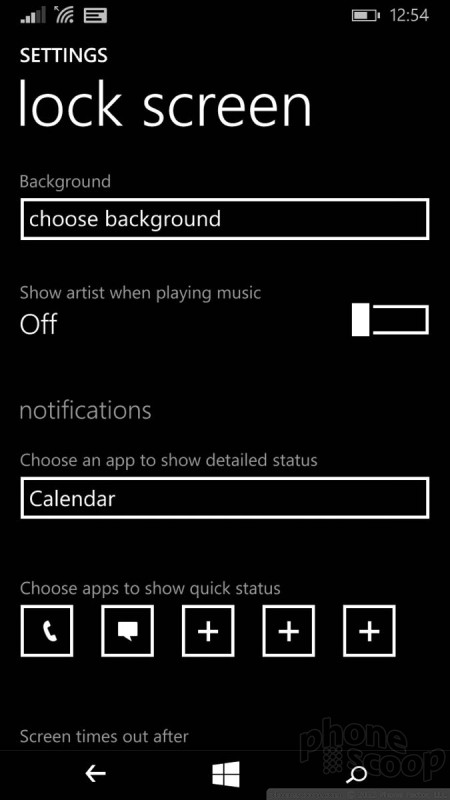



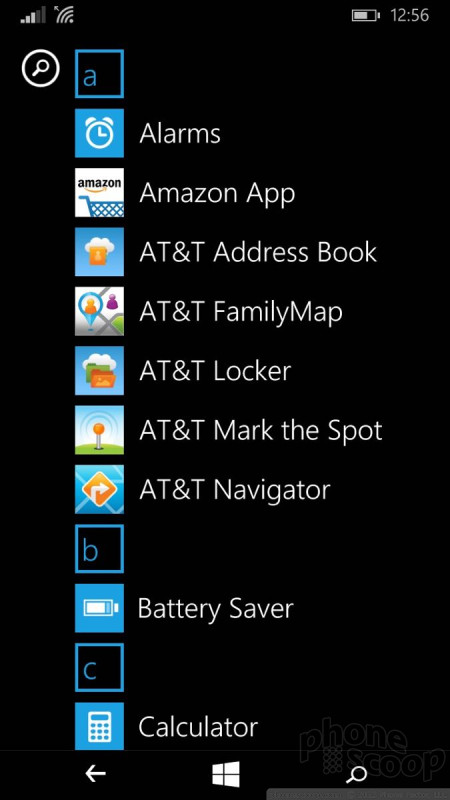




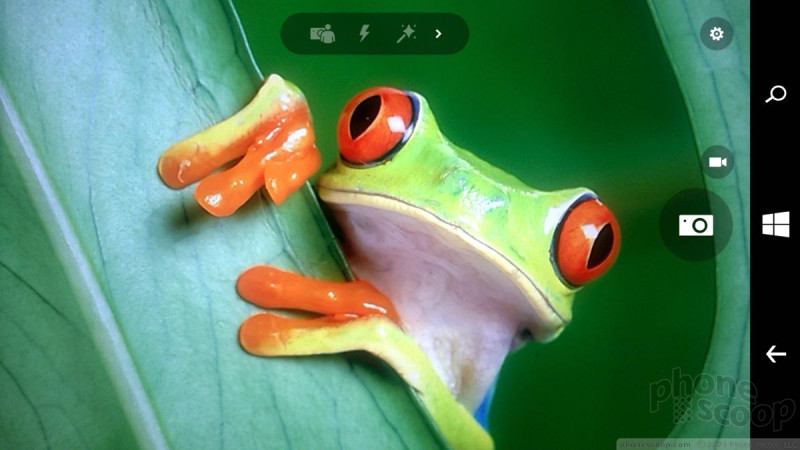
















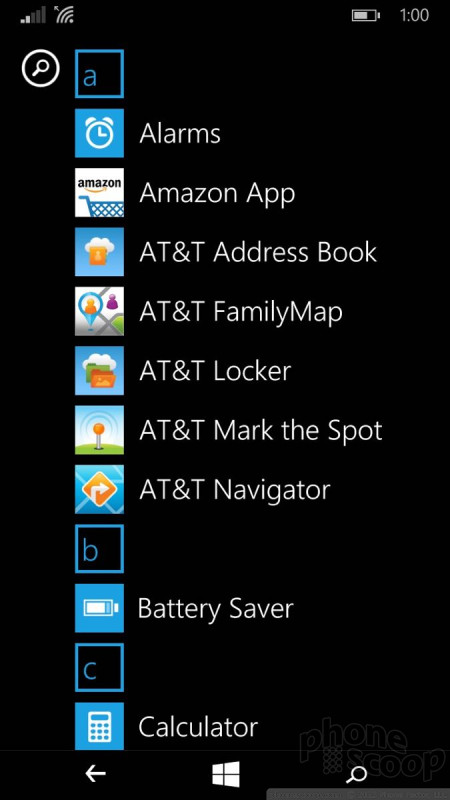


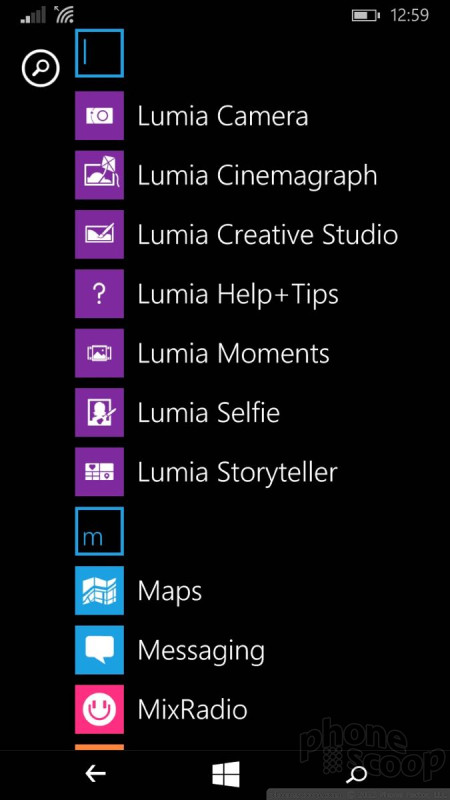






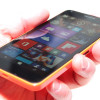 Hands-On: Microsoft Lumia 640 and 640 XL
Hands-On: Microsoft Lumia 640 and 640 XL
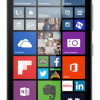 Lumia 640 XL Offers More for Phablet Lovers
Lumia 640 XL Offers More for Phablet Lovers
 iPhone 15 Series Goes All-In on USB-C and Dynamic Island
iPhone 15 Series Goes All-In on USB-C and Dynamic Island
 Samsung S24 Series Adds More AI, Updates the Hardware
Samsung S24 Series Adds More AI, Updates the Hardware
 Microsoft Lumia 640 XL
Microsoft Lumia 640 XL





